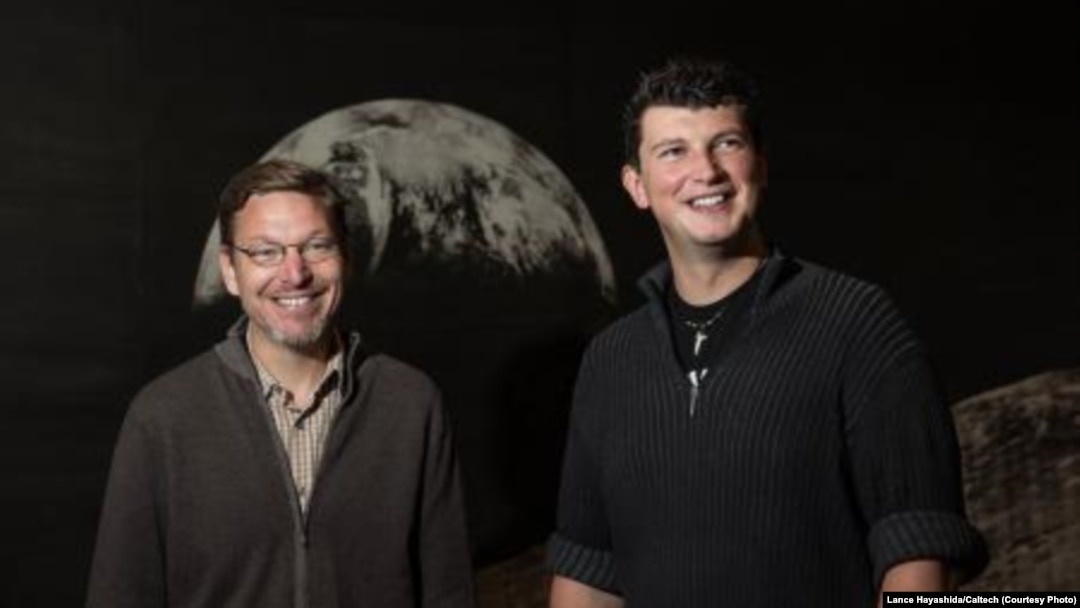If it turns out our solar system does, in fact, have a ninth planet, we can chalk up the discovery to an alignment of Russian and American stargazers.
Moscow-born Konstantin Batygin was a graduate student in the Planetary Science department at the California Institute of Technology (Caltech) when he first teamed up with astronomer Mike Brown -- perhaps best known to space lovers as the "Pluto Killer."
But just a little more than a decade after a discovery Brown made in 2005 prompted the downgrading of Pluto to "dwarf planet" status -- Batygin, now a Caltech assistant professor, and Brown say they have possibly discovered the true ninth planet.
Why possible? Because neither man has actually seen what they call Planet 9, but predict it must exist based on mathematical and computer modeling.
The duo decided to publish their research on January 20 in the Astronomical Journal because they want to crowdsource the effort to locate the new planet, which they believe is 10 times more massive than Earth, and so distant it would take a jaw-dropping 10,000 to 20,000 years to circle the sun.
"For the first time in more than 150 years, there's good evidence that the planetary census of the solar system is incomplete," Batygin told the AP news agency, referring to the mid-19th-century discovery of the eighth planet, Neptune.
Batygin left Russia in 1994, and admits in his Caltech bio that his most vivid memories of his childhood in his native country are not centered on the fall of the Soviet Union but his "deep-seated disapproval of nap time at kindergarten."
Even after leaving Russia for Japan, where his father worked as a physicist at the RIKEN research institute, Batygin's Russian education continued, however. After attending a Japanese elementary school, he went on to attend a Russian-embassy based school. From there he moved to northern California, where he attended university, met his wife, and formed partnerships with future colleagues like Brown.
Groundbreaking Russian Researchers
Batygin's ties to Russia have not gone unnoticed there, and, likewise, he is appreciative of the contributions Russian scientists have made to space exploration.
Batygin told the news website Lenta.ru on January 21 that, despite the distance and the time away from his homeland, he does keep in contact with colleagues in Russia and Russian-speakers working in the United States and other countries.
He admits that he doesn't have time to keep up with current affairs back in Russia, but is sure Russian theoretical science remains "strong, with many good researchers."
He singles out the work of one Soviet scientist, who discovered how the orbit of a satellite is affected by the gravity of another body orbiting farther out, as groundbreaking.
"The case of Mikhail Lidov comes to mind. In the 1950s he calculated the effect that is now called the Lidov-Kozai mechanism," Batygin told Lenta.ru. "For the longest time, people didn't understand how important the effect was. Lidov was years ahead, and scientists like him are still in Russia today."
Batygin is now in a position to join the exalted ranks of such space pioneers.
His work had already attracted the attention of contemporaries like Alessandro Morbidelli of the Cote d'Azur Observatory in France, an Italian planetary scientist with whom Batygin worked as a grad student. Thanks to the crowdsourcing approach toward confirming Planet 9's existence, ordinary celestial sleuths can now join the search effort.
"I think the chase is now on to find this planet," he told The New York Times.
If the elusive Planet 9 is indeed found, the stars would align for Batygin and Brown and their efforts to make new discoveries in the ring of icy debris beyond Neptune known as the Kuiper Belt.
Brown already played a major role in altering the map of the solar system, even if it came at Pluto's expense. His discovery of Eris, a Pluto-sized Kuiper Belt object, in 2005 led to the discussion over Pluto's classification as a planet. The next year, the International Astronomical Union redefined Pluto, along with Eris, as a dwarf planet.
While Brown incurred the wrath of angry Pluto supporters, his work helped spark new interest in the distant plutoid (a special category of dwarf planet whose orbit is beyond Neptune's).
Seeing that the exploration of the Kuiper Belt was of the highest priority, NASA's New Horizons mission was launched in 2006 with the goal of learning more about Pluto and its moons. Nine years later, in July 2015, New Horizons finally reached its destination, giving Earth its first bird's-eye view of its former planetary counterpart.


